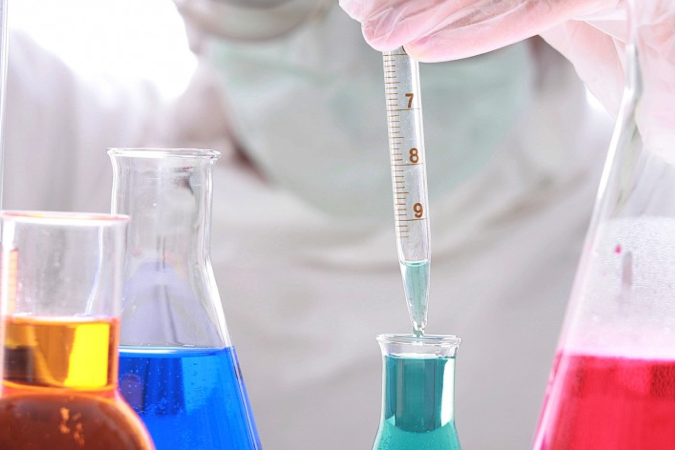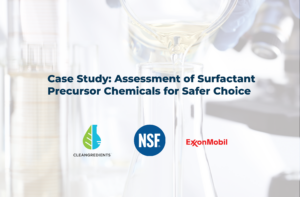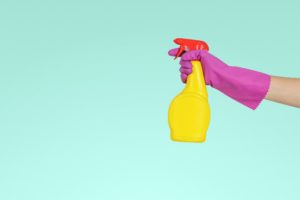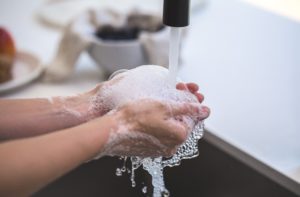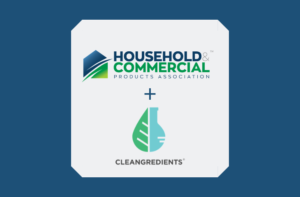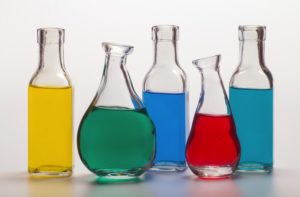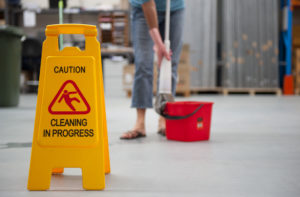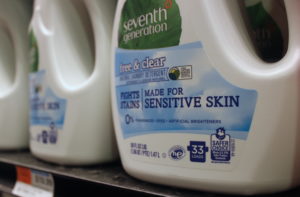Preservatives are an essential ingredient for most household and personal care products, but can also be a challenge for manufacturers looking to minimize chemical hazards in their products.
Consumers expect the products they buy to maintain quality and usability for months after purchase, if not longer. Microbial contamination can negatively affect both the stability and the performance of a formulation. For example, microbes can generate acidic byproducts that affect the pH of the formulation, potentially reducing cleaning efficacy. Microbial growth can also have aesthetic effects by changing the odor or color of the formulation. Finally, microbial growth can present a health risk for users of the product (particularly for vulnerable populations), and can result in product recalls. To meet consumers’ expectations, the formulation of most household and personal care products requires the use of preservatives to protect against microbial contamination.
The susceptibility of a product to microbial contamination depends on a number of factors. Microbes may be introduced into a product either during the manufacturing process (even when good manufacturing practices are used) or during use of the product by the consumer. Water is essential to the growth of microbes and is present in many household and personal care products, and ingredients in many products (such as surfactants or fragrances) can serve as food for microbes. Microbial growth also depends on a product’s pH; bacteria can typically grow at pH 4 to 9, while fungal growth typically occurs at a pH of 3 to 10. However, microbes can also grow outside this pH range if they are acclimated to a manufacturing environment. Today’s environmentally-friendly products are more likely to be water-based and have lower levels of volatile organic compounds (VOCs) and heavy metals, so they are more potentially susceptible to microbial contamination. Plus, use of readily biodegradable surfactants often made from plant sugars can increase microbial activity, increasing the need for preservation.. Because of this susceptibility, preservatives are used in almost all liquid household and personal care products.
A number of preservatives have recently come under scrutiny, with regulatory bans and restrictions as well as consumer, NGO, and retailer pressure to eliminate their use. Examples include the category of compounds known as parabens, which have been criticized as potential endocrine disruptors, and compounds that release formaldehyde, a human carcinogen. In light of the concern consumers have about potentially hazardous preservatives in household and personal care products, businesses are taking note. Companies are taking steps to disclose the preservatives they use — for example, in December 2016 Procter & Gamble released a new preservative tracker, and in recent years Johnson & Johnson took steps to remove parabens and formaldehyde-releasing compounds from certain of its products.

These increasing pressures and restrictions reduce the selection of preservatives available to formulators of household and personal care products.
some preservatives used in lieu of parabens or formaldehyde-releasing compounds are potentially allergenic, and overuse of these in multiple products can lead to sensitization and allergic reactions.
For example, methylisothiazolinone was named the “Allergen of the Year” by the American Contact Dermatitis Society in 2013, and will be restricted for certain cosmetic applications in the EU in 2017.
As a result, there is a need for manufacturers to identify new, safe, and effective preservatives. Preservatives are by definition toxic to bacteria and fungi, so identifying alternatives that are effective in controlling a broad spectrum of microbes while being non-toxic to humans and the environment is a challenge. Natural alternatives to conventional preservatives, such as essential oils, plant extracts, and organic acids, are sometimes used, and may have more favorable toxicological profiles. For example, a number of organic acids are listed on EPA’s Safer Chemical Ingredient List (SCIL) with a full green circle designation, indicating that they have been verified to be of low concern based on experimental and modeled data. However, these compounds are not appropriate for use as preservatives in all formulations. For example, organic acids are useful at a pH range of 2 to 6 and are effective against fungi and a subset of bacteria. They are not effective against all bacteria and have limited use as preservatives in alkaline products such as all purpose cleaners and laundry detergents. Therefore, broader spectrum preservatives and preservatives effective at an alkaline pH are needed for some formulations, even though in some cases the only suitable options may have some hazard concerns such as the potential for sensitization.
Few new preservatives are currently being developed, due in part to the high cost and regulatory hurdles in place. For example, the EU Cosmetics Regulation bans marketing animal-tested ingredients for cosmetics, requiring alternative safety testing methods which may not be available for all endpoints. In the US, preservatives are regulated as antimicrobial pesticides under the Federal Insecticide, Fungicide, and Rodenticide Act (FIFRA), requiring extensive and costly efficacy and toxicity testing.
The Green Chemistry & Commerce Council (GC3) has recognized the need for new, safer preservatives, and launched its Preservatives Project with two stated goals:
- To accelerate the commercialization of new, safe, and effective preservative systems for personal care and household products; and
- To create a new model of pre-commercial collaboration whereby companies with common needs for new, safe chemicals, materials, or other technologies, can accelerate the development and scale-up of these technologies.
Through this initiative, GC3 has developed criteria for safer preservatives and in 2016 launched a preservatives competition to motivate research and development of safer preservatives. The initiative has earned the support of major retailers such as Walmart and Target, which participate in the organization’s Retailer Leadership Council, as well as a number of chemical manufacturers and manufacturers of household and personal care products hoping to find safer ingredients for their products.
Preservatives remain essential to maintain the quality of most household and personal care products, but are a challenge for companies looking to eliminate hazardous ingredients from their formulations. Chemical suppliers have an opportunity to develop and introduce innovative solutions, since demand for preservatives in products will continue even as consumers become increasingly aware of the hazards posed by many existing preservatives.

